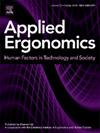了解采用机器人辅助手术所面临的挑战:利益相关者和普通民众对人机交互、建筑环境和培训的看法
IF 3.1
2区 工程技术
Q2 ENGINEERING, INDUSTRIAL
引用次数: 0
摘要
本研究旨在从人机交互、建筑环境和培训这三个对促进机器人辅助手术(RAS)的采用至关重要的方面探讨采用障碍。从这些角度确定了研究和设计指南。本研究包括三个阶段:1)对 RAS 利益相关者进行调查,并进行众包调查;2)利益相关者焦点小组;3)与主题专家举行研讨会,确定 RAS 未来研究的优先次序。从人机交互的角度来看,障碍包括临床医生对自动化的信任度犹豫不决,以及在长时间的 RAS 过程中身体不适。考虑到建筑环境,还发现了阻碍沟通和干扰工作流程的障碍。外科医生的培训障碍体现在从正规(课程)到非正规(同行培训)的不同课程设置上。众包调查结果表明,社会经济地位在 RAS 感知中起着一定作用。设计指南包括1)改善人体工程学;2)有意识地引入自动化;3)为未来的手术室提供足够的室内存储空间;4)为较旧/较小的手术室开发紧凑型 RAS 设备。本文章由计算机程序翻译,如有差异,请以英文原文为准。
Understanding the challenges of robotic-assisted surgery adoption: Perspectives from stakeholders and the general population on human-interaction, built environment, and training
This study aims to explore adoption barriers from three aspects critical to facilitating robotic-assisted-surgery (RAS) adoption: the human-robot-interaction, built-environment, and training. Guidelines for research and design are identified from these perspectives. This study consisted of three phases: 1) surveys to RAS stakeholders and a crowd-sourcing survey; 2) stakeholder focus groups; and 3) a workshop with subject-matter experts to prioritize future research for RAS. Barriers from the human-robot-interaction perspective include hesitancy among clinicians to trust automation and physical discomfort during prolonged RAS. Barriers impeding communication and workflow disruptions were identified considering the built-environment. Training barriers were exemplified by varying curriculums from formal (courses) to informal (peer training) for surgeons. Crowd-sourced survey results suggest socio-economic status plays a role in RAS perception. Design guidelines include: 1) improved ergonomics; 2) deliberate introduction of automation; 3) sufficient in-room storage for prospective operating rooms; and 4) the development of compact RAS devices for older/smaller rooms.
求助全文
通过发布文献求助,成功后即可免费获取论文全文。
去求助
来源期刊

Applied Ergonomics
工程技术-工程:工业
CiteScore
7.50
自引率
9.40%
发文量
248
审稿时长
53 days
期刊介绍:
Applied Ergonomics is aimed at ergonomists and all those interested in applying ergonomics/human factors in the design, planning and management of technical and social systems at work or leisure. Readership is truly international with subscribers in over 50 countries. Professionals for whom Applied Ergonomics is of interest include: ergonomists, designers, industrial engineers, health and safety specialists, systems engineers, design engineers, organizational psychologists, occupational health specialists and human-computer interaction specialists.
 求助内容:
求助内容: 应助结果提醒方式:
应助结果提醒方式:


